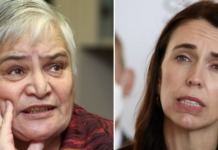Minister of Health Andrew Little’s White Paper on the Government’s ‘health reforms’, announced in April, included the unexpected intention to abol ish New Zealand’s district health boards (DHBs), effective 1 July 2022.
DHBs are unsurprisingly largely associated in people’s minds with hospitals. Some would argue that this makes the health system hospital-centric. Not so. Hospitals attach the greater public and media attention because they deal with the most complex, specialised and acute (non-deferrable) cases along with emergencies.
In other words, hospitals are the place of last resort for those cases that can’t be dealt with elsewhere in in the health system. Hospitals are the most integrated part of the health system.
As a consequence hospitals are the part of the system where a sad or bad outcome for patients is more likely to occur and where access is more likely to be delayed or denied. It is not difficult to see how hospitals will continue to function next July: pretty much the same as now (how they might subsequently evolve is another question).
DHBs and community health
While recognised internationally as an asset, an underappreciated role of DHBs is their responsibility for community health which includes primary care delivered largely by general practitioners. DHBs have a geographically defined, integrated, whole-of-population responsibility for both community and hospital healthcare. Their integrated nature makes them relatively advanced organisations in advanced universal health systems.
The abolition of DHBs means hospital and community healthcare will be more structurally separate than at present and a consequential diminishing of integration. Andrew Little’s White Paper would have the DHBs responsibility for the provision of primary care at least transferred to new ‘locality networks’ overseen by the highly centralised ‘Health New Zealand’ (a new national bureaucracy responsible for the funding and provision of healthcare to be established by 1 July 2022).
The Simpson review on localities
The Heather Simpson-led Health and Disability System Review Panel didn’t say much about localities, but it did propose locality plans with indicative budgets for each locality based on age, ethnicity and deprivation.
Locality plans under Simpson would have included:
- health needs assessment results (including unmet need for different services)
- what primary care services would be available to meet these needs and in what settings
- how networks of services would be organised and provided, and by whom
- how access would be enabled
- how specific populations would be served
- the outcomes these activities were expected to achieve for defined populations.
By ‘locality’, Simpson meant a geographically defined area with a population of between 20,000 and 100,000 people, with footprints that make sense for the community being served. Localities could be aligned to council boundaries, iwi rohe or natural borders. PHOs would disappear. Sensibly, presumably to reduce transaction costs, the population analysis currently undertaken by Primary Health Organisations would have been picked up by each locality’s DHB.
The April White Paper keeps Simpson’s localities alive through what it calls ‘locality networks’. But it doesn’t build on the Simpson review in terms of what these might comprise. Instead, there is a generalised, imprecise implementation process.
The most noticeable difference between the Simpson review and the Little White Paper is that the former was based on the continuation of DHBs (albeit fewer of them), whereas the latter is based on their abolition.
Distant relationships
This means a greatly increased distance between the accountable statutory body, the new Health New Zealand, and the locality networks it will be responsible for developing and supporting, including the necessary engagement and understanding of local population health needs. The difference is the expansion of bureaucratic centralism at the expense of closer local engagement.
The Health and Disability Review Transition Unit led by Ernst & Young senior partner Stephen McKernan is vague on an implementation timeframe for primary and community health to be “reorganised” through localities, other than over the “next few years”.
Each locality is to have a consistent range of core services and a locality plan. General practices and other primary care providers are to form part of a wider locality network with “shared goals”. Locality networks may not necessarily have responsibility for geographically defined populations, as DHBs presently do and as the Simpson review envisaged.
‘Health New Zealand’, in partnership with an equally new Māori Health Authority, will be responsible for implementing localities from 1 July next year through phased rolled out tranches, starting with early prototypes. Budget 2021 allocated $45.98 million over four years to develop prototypes and test the locality approach. Of this, $9.6 million is for five to six prototypes in 2021/22, covering about five per cent of the population.
It is clear that the thinking on locality networks is embryonic at best. McKernan himself has acknowledged this, in a recent update from his unit, by advising there is “…still a lot of work to do on designing how localities will operate in practice”. Translation: we haven’t a clue!
Working it out as you go
This ‘working it out as you go’ approach is risky. It means that the centralised ‘Health New Zealand’ is well placed to call the shots at the expense of local engagement, especially at the critical prototype and foundation stages.
It would have been better to have used the advantages of local population knowledge of the DHBs and then, once locality networks were up and running, make a call on the future of DHBs. With such a vacuum of understanding of what might comprise localities and their networks, the abolition of DHBs next year is premature. Unfortunately, common sense isn’t the way of white board warrior business consultants who the government listens to the most.
When cooking meals, chefs start from a recipe. Locality networks have yet to get to the recipe stage. Has Minister Little created an avoidable muddle with his locality networks? We haven’t reached that destination yet. Perhaps we are in a pre-muddle situation.
[This is a revised version of my latest column in New Zealand Doctor Rata Aotearoa published on 21 July]
Ian Powell was Executive Director of the Association of Salaried Medical Specialists, the professional union representing senior doctors and dentists in New Zealand, for over 30 years, until December 2019. He is now a health systems, labour market, and political commentator living in the small river estuary community of Otaihanga (the place by the tide). First published at Otaihanga Second Opinion.






My updated Ideas to fix long term illness and health welfare funding.
1 Create a Medicare agency including accidents and long term illness ( long term being anything outside of your sick leave entitlement).
2 Place a Medicare Agency social worker in every Doctors surgery ( Why because of the increased workload because of idea 5 6 7 and 9 ).
3 Fund ALL MEDICINES through the Medicare Agency ( Pharmac funded or otherwise).
4 Fund all long term illness welfare funding through the Medicare agency ( ie 80% of Minimum wage benefit).
5 Remove all Long term Welfare illness funding from Winz.
6 Remove all the relationship rules and limits for all long term welfare illness benefits.
7 Remove the requirement for 2nd opinion doctors reports as the ACC social worker can discuss it directly with your doctor at the clinic.
8 Create the agency within the New remodelled Agency of compassionate care to cut double agency costs.
9 The Agency organises specialist appointments and where an operation in a public hospital can’t be done in a timely manner arranges it in the private sector at Governments cost.
This should be arranged before leaving the Doctors surgery/clinic.
10 All medicines on a Prescription ( Funded or Unfunded) should count towards the 20 count, including any repeats, to get Free meds after 20 Prescriptions.
11 Remove restrictions on diagnostic and maintenance testing that patients require for effective medication dosing purposes.
12 All ACC SOCIAL WORKERS at a doctors surgery issue a patient with a medicines swipe card to swipe at a pharmacy.
If a medicine is unfunded ACC pays all but the $5 pharmac fee, if it is Funded the Patient pays the $5 fee.
Why the card ?
This is to keep track of the total number of medicines prescribed in any given year and the total cost involved .
This means all costs will be available from one agency and not as now spread over multiple Dhb’s who have no idea whatsoever of the total dollar cost of unfunded medicines prescribed each year .
13 Dr visit fees and unfunded Medicines then be funded by a medicare levy, which replaces the current acc levies, we all pay to the Medicare agency including beneficiaries.
https://thedailyblog.co.nz/2021/07/02/guest-blog-ian-powell-funding-general-practice-in-new-zealand/
this is point 14 added to my list of things to add to the new medicare agency.
The medicare agency buys up retiring doctors clinics whose staff are not interested in buying the current clinic they are employed in and the Medicare agency overtime builds a nationwide health Hub GP clinic network that runs on the low cost funding model.
Then point 15 :
The new medicare agency charges Pharmac with the responsibility of building OUR OWN MEDICINES PRODUCTION FACILITY.
I have been told in NZ in 2019/20 $115 billion was spent on Medical research approximately 1/3rd of our total GDP so why are we buying generic’s and importing them ? .
When we could be producing our own at a much lower cost.
https://thedailyblog.co.nz/2021/06/27/guest-blog-ian-powell-lets-manufacture-our-own-pharmaceuticals/
Thank you Ian for another enlighting review. It will be interesting to see how the changes develop. I can only hope Minister Little is listening and understands the complexities of what he is attempting.
Agree Peter but must say I very much doubt Minister Little will listen.
From previous experience I always get concerned when I see that Ernst & Young are involved in anything. As well documented in Ian’s review changes of this nature are hugely complex and consultant’s will only deliver what their customer (Minister Little) wants th hear.
And even less likely that he will understand.
Pope Punctilious II: “And even less likely that he will understand.”
True enough. Were it the case that he understood anything about Health, he’d not have abolished the DHBs.
And John above is also correct: Little won’t be listening, either.
Considering National crippped our health system as the review confirmed, I’d say Little has listened to the right advice, rather than right wing keyboard warriors whom make fanatical statements without any knowledge of Little or his intellect. But keep banging away, you are all good for a laugh.
Give it up, Bert. Your my-government-right-or-wrong defence of the current inept lot is wearing thin.
The government is proposing to can DHBs altogether, in favour of something like the UK’s NHS. Which doesn’t work, to the extent that the UK government has been looking to rejig it, so as to make it more closely resemble NZ’s model.
Be clear-eyed about this government’s weaknesses and its propensity for making dumb decisions. This is the dumbest so far, by a country mile.
I worked long years in the health sector. In my view, it needs more reorganisation like it needs toothache. What it most certainly needs is MORE FUNDING. Bucket loads of it. And an end to the god-forsaken neoliberalism which has plagued it these many years.
I don’t doubt the intellect of Andrew Little but feel he’s inclined to a doctrine rather than what is best for New Zealanders.
I agree with D’Esterre more funding is required but it must be carefully monitored and not turn into a free for all.More rearranging of the structure is yet another exercise in futility.
I’m very aware of this government’s weaknesses as most people are.In over 4 years they have failed to fulfil most of their promises.Not so much because they don’t want to but more because they don’t know how.
I suspect like many I have no idea what would be the ‘ideal’ way to deliver our Public Health system. What I do know is that ‘revolution’ seldom fixes anything; I am a great believer in ‘evolution’ to rectify problems.
With the vast amounts of public money flowing into the system it is well past time for a consensus between the political parties on how to move forward. Seems to me National want as much privatised as possible and have no interest in anyone without health insurance. Labour want a nationalised system hoping that with State control a miracle will happen. What is best for us the consumer? The current system is not sustainable and does not deliver consistently across the country. Large parts of it rely on charitable organisations to fill in gaps. Anecdotally many ‘proffessionals’ are doing very nicely out of arrangements with local DHB’s. To continue this ongoing yo-yo between systems just wastes money and time, and costs lives.
Agree Peter
Peter and John: there’s no perfect structure for any healthcare system. Every design has flaws. But the DHB model would be pretty good at delivering the services NZers need, if only it were properly funded.
To the best of my knowledge, it never has been, hence the rise since the 1990s of the health insurance market and the expansion of the private hospital sector. The latter has existed in some form since before I was born.
The funding deficit goes a considerable way to explain the fact that gaps in service delivery are filled by charities (that hospital in ChCh, for instance). We can do better, but not with a model which resembles the NHS.
Any system can be made to function if endles resources and money are poured into it – this is generally how wars are fought. I’m very suspicious of solutions that say we can make it work if we just had more money. We already spend enormous amounts and I am sure everyone working in the system could identify cost savings. There may be a need for more money, but we need to ensure it ends up at the coal-face and not absorbed by people clicking-the-ticket. I am not convinced that the current DHB and multiple gov depts structure achieves effeciency.
Peter Kelly: “Any system can be made to function if endles resources and money are poured into it…”
I don’t think that anyone is suggesting that the health system should receive unlimited funding. I’m certainly not. But underfunding of Health, going back many years, is indisputable. I worked there: I saw its deleterious effects every day. And in the years since, it’s worsened; there’s been a lot of publicity about it. Were it not an issue, we wouldn’t have the dire situation with waitlists, people unable to get elective surgeries and timely cancer treatment, staff shortages and burnout, and service gaps being filled by charities.
I do know that the DHB model would work much better with more funding. And I also know that moving to a NHS model, as the government proposes (our GP rolled her eyes at that news!) won’t be more effcaceous. If it doesn’t work in the UK, why on earth would anyone believe that it’d work here?
As for the proposed Maori Health Authority: words fail me.
Here’s what I see – by any measure Maori have not had good outcomes from the current system. We can argue all sorts of reasons why that is (including personal responsibility), but if we keep doing what we are those statistics will only get worse. I look at the Waipareira Trust model and see real benefits, so I think a Maori Health Authority is at least worth a try and applaud Minister Little for the courage to do it – the arbitary abolution of DHB’s I’m not so sure about. Like Lester Levy said recently if we don’t get into ‘prevention medicine’ no amount of money will adequately fund the health system.
Absolutely D’Esterre.
Comments are closed.